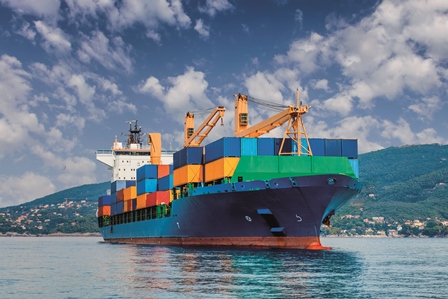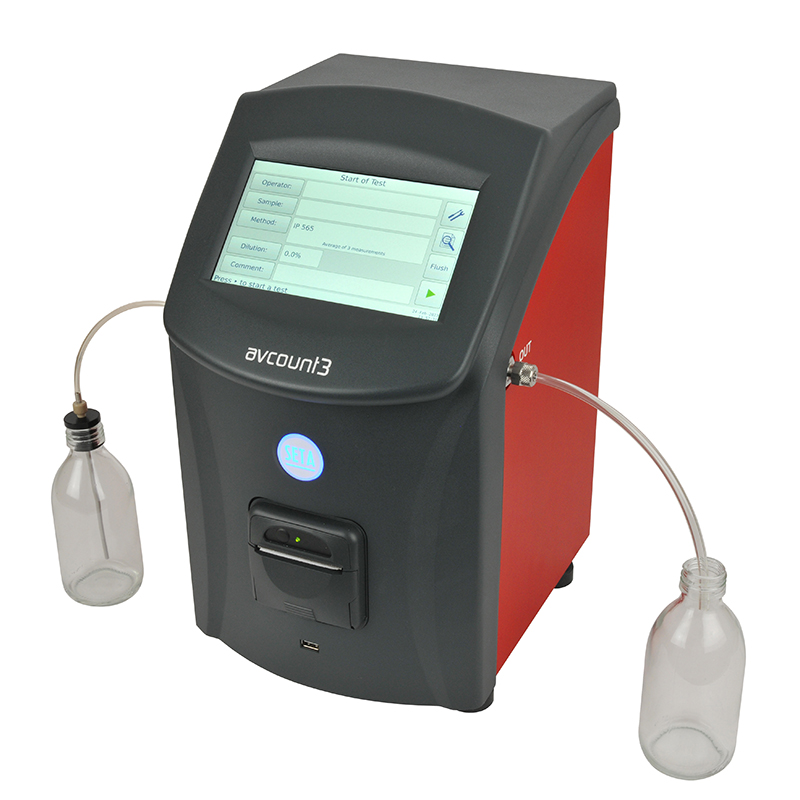Introducing IP 646: The New Standard for Particle Counting in Marine Methanol Fuel
As the marine industry accelerates toward low-carbon alternatives, methanol is emerging as one of the most promising fuels for sustainable shipping. With this transition comes a critical need for accurate and consistent fuel cleanliness testing. A new specification, ISO 6583:2024 Methanol as a fuel for marine applications – General requirements and specifications includes particle counting and states the preliminary method IP PM-FI in Annex D Fuel Cleanliness. This has now transitioned to a full test method, IP 646.
The UK Energy Institute has updated IP PM-FI to IP 646 – Determination of the Concentration of Dispersed Particles in Marine Methanol Fuel (Automatic Particle Counter, Light Obscuration Method). This new test method provides a standardised procedure for particle counting in methanol fuels, ensuring that ship operators, fuel suppliers and laboratories can confidently measure particulate contamination with excellent precision.

What is IP 646?
IP 646 defines how to determine the concentration of dispersed particles in marine methanol fuels using an Automatic Particle Counter (APC) based on the light obscuration principle, such as the Seta AvCount3 SA1100-0.
The method specifies:
- A measurable particle size range from 4 µm(C) to 30 µm(C)
- Calibration traceability to ISO 11171
- Measurement of up to 60,000 cumulative counts per millilitre (particles/mL)
- Guidance for reproducible sample handling and analysis
There are only minor differences between IP PM-FI and IP 646, with IP 646 including full precision and some additional guidance around cleaning solvents when switching between different types of fuel sample in the apparatus, where the miscibility of methanol is different to aviation fuel (IP 565) and diesel (IP 630). By establishing clear parameters for particle measurement, IP 646 enables consistent testing results across laboratories and equipment types, helping safeguard fuel quality and protect marine engines from abrasive wear caused by particulate contamination.
Why particle counting matters for Methanol Fuel
Methanol’s chemical and physical properties differ significantly from conventional diesel and marine distillates. These differences can influence the way particles disperse, settle and interact within the fuel system.
Accurate particle counting is therefore essential to:
- Help prevent injector and pump damage and ensure engine reliability
- Verify fuel cleanliness during bunkering and whilst loading
- Support regulatory compliance and fuel quality certification
- Optimise filtration and fuel conditioning processes
With IP 646, the industry now has a dedicated and validated procedure to quantify particulate contamination in marine methanol fuels, supporting safe and efficient vessel operation.
AvCount3 for IP 646 particle counting
Stanhope-Seta’s AvCount3 Particle Counter is a compact, high-precision automatic particle counter that aligns with the requirements of IP 646. Designed for fuel, oil and fluid contamination analysis, AvCount3 measures particle size and distribution using light obscuration, as defined in IP 646.
Key features of the AvCount3 Particle Counter, SA1100-0:
- Measurement Range: From 2 µm to 100 µm, covering the IP 646 range of 4 µm(c) to 30 µm(c)
- Calibration Traceability: Fully compliant with ISO 11171
- Automated Operation: Touchscreen interface, programmable methods and built-in data reporting
- Versatile Compatibility: Suitable for fuels, biodiesel, hydraulic fluids and methanol samples
- Data Connectivity: Supports LIMS integration and automatic reporting

With these features, the AvCount3 provides laboratories and marine fuel suppliers with a reliable and traceable solution for implementing IP 646 particle counting methods.
Supporting a cleaner Marine future
The introduction of IP 646 represents a major step forward in ensuring fuel cleanliness for alternative marine fuels such as methanol. Reliable particle counting supports cleaner combustion, reduced wear and improved efficiency, all vital for meeting the industry’s sustainability and performance goals.
By pairing the new IP 646 test method with the proven performance of the Stanhope-Seta AvCount3 Particle Counter, laboratories and fuel suppliers can ensure accurate, consistent results that help power the next generation of cleaner marine operations.
Learn more
Explore the AvCount3 Particle Counter, SA1100-0 >
For more details on the Energy Institute’s new standard, visit IP 646 – Determination for Dispersed Particles in Marine Methanol Fuel >